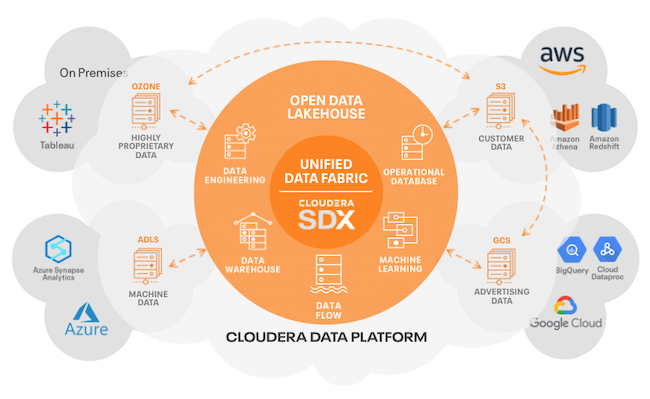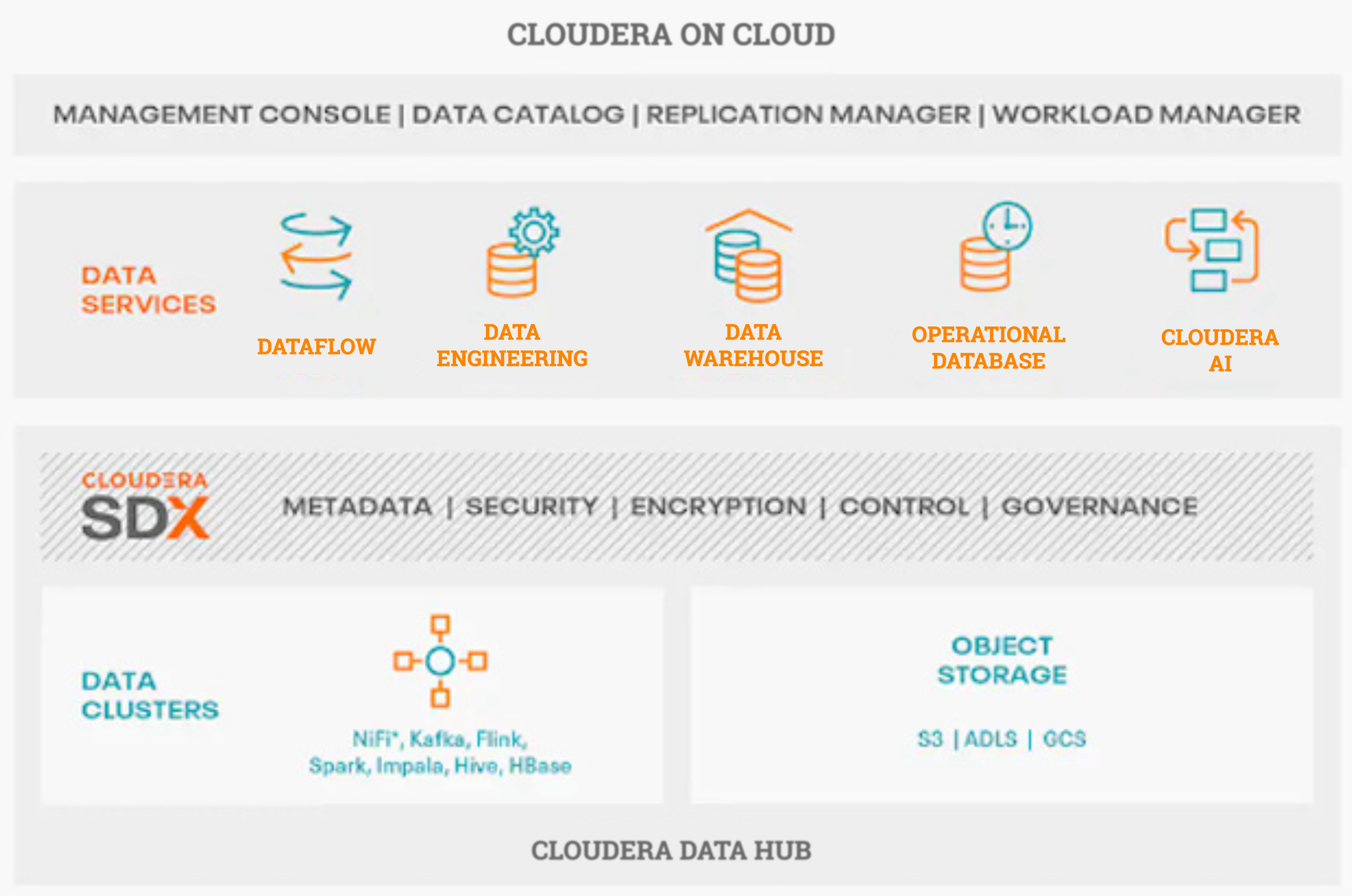Cloudera on cloud
Cloudera is a hybrid data platform designed for unmatched freedom to choose—any cloud, any analytics, any data. Cloudera can be deployed on cloud and on premises.
What is Cloudera
Cloudera delivers faster and easier data management and data analytics for data anywhere, with optimal performance, scalability, and security. With Cloudera you get the value of on-premise and cloud deployments for faster time to value and increased IT control.
Cloudera provides the freedom to securely move applications, data, and users bi-directionally between the data center and multiple public clouds, regardless of where your data lives. All thanks to modern data architectures:
-
A unified data fabric centrally orchestrates disparate data sources intelligently and securely across multiple clouds and on premises.
-
An open data lakehouse enables multi-function analytics on both streaming and stored data in a cloud-native object store across hybrid multi-cloud.
-
A scalable data mesh helps eliminate data silos by distributing ownership to cross-functional teams while maintaining a common data infrastructure.
With Cloudera Shared Data Experience (SDX), Cloudera offers enterprise-grade security and governance. Cloudera SDX combines enterprise-grade centralized security, governance, and management capabilities with shared metadata and a data catalog, eliminating costly data silos, preventing lock-in to proprietary formats, and eradicating resource contention. Now all users and administrators can enjoy the advantages of a shared data experience.

Cloudera on cloud
Create and manage secure data lakes, self-service analytics, and machine learning services without installing and managing the data platform software. Cloudera on cloud services are managed by Cloudera, but unlike other public cloud services, your data will always remain under your control in your workloads and your data will always remain under your control in your cloud account. Cloudera runs on AWS, Azure and Google Cloud.
Cloudera on cloud lets you:
-
Control cloud costs by automatically spinning up workloads when needed, scaling them as the load changes over time and suspending their operation when complete.
-
Isolate and control workloads based on user type, workload type, and workload priority.
-
Combat proliferating silos and centrally control customer and operational data across multi-cloud and hybrid environments.

